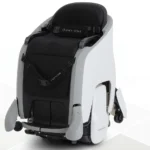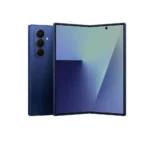This advancement holds the potential to reshape the landscape, potentially generating billions in revenue.
Despite Tokyo Electron’s ambitious move, Lam Research, currently holding an undisputed 100% market share, appears undaunted. CEO Tim Archer exuded confidence, underscoring the company’s established dominance in the field.
Tokyo Electron’s breakthrough centers on 3D NAND flash memory, renowned for its data retention capabilities. The company devised an innovative method for etching channel holes, a pivotal step involving rapid and deep insertion of vertical holes into memory cells.
As the demand for enhanced memory capacity continues to escalate, the norm has become stacking layers of memory cells vertically. While current products boast over 200 layers, the appetite for greater capacity remains insatiable. With additional layers, more sophisticated equipment is imperative.
Tokyo Electron asserts that its pioneering technology can etch holes to a depth equivalent to over 400 layers, achieving this 2.5 times faster than conventional methods. Furthermore, the process significantly mitigates its impact on global warming.
Presently, Lam Research holds an exclusive market share for NAND channel etching equipment—a high-value process requiring substantial equipment. In terms of market size, it constitutes the largest proportion of all etching equipment.
Tokyo Electron foresees the NAND channel process market ballooning from $500 million in 2023 to $2 billion in 2027. If Lam fails to develop a competitive product to counter Tokyo Electron’s breakthrough, the current market dynamics could undergo a seismic shift.
This potential reversal could substantially bolster Tokyo Electron’s financial standing. In the fiscal year ending March 2023, new etching equipment sales narrowly missed the 580 billion yen mark (approximately $3.9 billion), representing roughly a quarter of consolidated total sales.
Should the market expand in line with the company’s projections, this could translate into a sales increase approaching 300 billion yen.
Tokyo Electron’s unwavering commitment to substantial research and development investments has proven instrumental in this technological breakthrough. Over the past five years, R&D spending through March 31 surged by 77% compared to the preceding five-year period.
This far surpasses the 54% increase at U.S. competitor Applied Materials and the 55% rise at Lam Research. Despite an anticipated profit dip, Tokyo Electron plans to allocate a record 200 billion yen to development this fiscal year.
The investments have yielded significant returns, with Tokyo Electron’s total earnings before interest, taxes, depreciation, and amortization, coupled with development costs over the past five years, outstripping the previous five-year period by a factor of 7.3. This outperforms Applied Materials (5.5) and Lam Research (6.2).
Tokyo Electron’s steadfast focus on efficiency, informed by client feedback and augmented by artificial intelligence, has streamlined their development process. Although global economic uncertainties and interest rate hikes have impacted their stock price, recent technological strides could offer a much-anticipated boost.
NAND manufacturers are poised to make substantial investments in NAND technology around 2025. Despite uncertainties surrounding smartphone and computer demand, the production of equipment with new technologies could markedly enhance Tokyo Electron’s earnings and market share.



